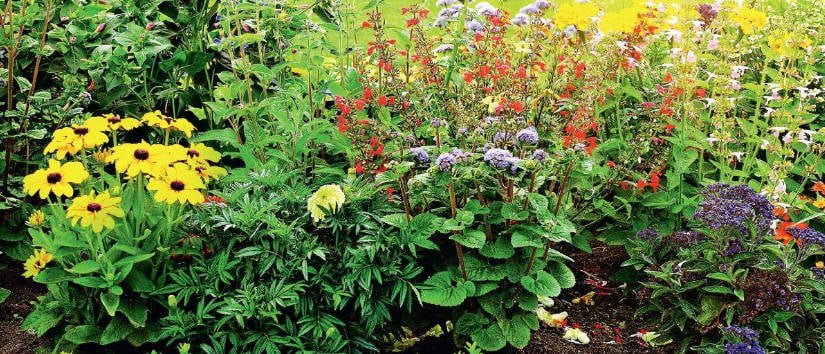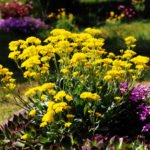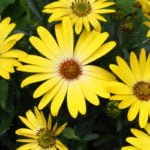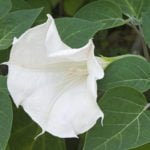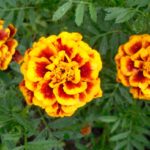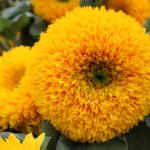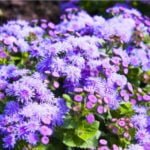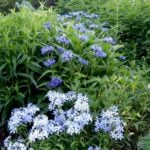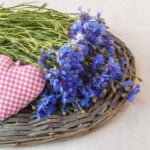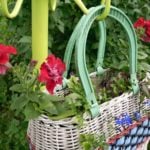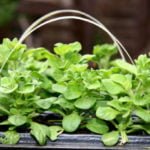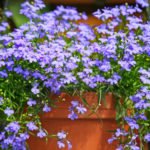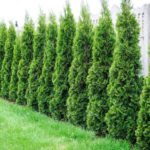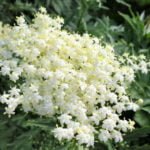Spring comes earlier, summer lasts longer, and the whole season the garden is generously filled with beautiful flowers — it is the merit of garden annuals.
Its features are at the beginning, middle and end of the season. Therefore, it is necessary to purchase seedlings of annuals or grow them yourself, taking into account the time by which flowers are needed.
- For summer garden decoration such property of plants as cold resistance, does not matter much. After the end of spring frosts and before the arrival of autumn cold weather we have enough time to admire the flowering of heat-loving plants.
- But if we need flowers at the beginning or at the end of the season, the resistance to low temperatures comes out in the first place, and it is necessary to choose other annuals. Not all colors benefit from the heat. Cold-resistant annuals often develop better in moderately warm and even cool weather. It is these plants that can bloom when the sun shines not so bright, the soil cools and the weather deteriorates, come to the fore in late summer.
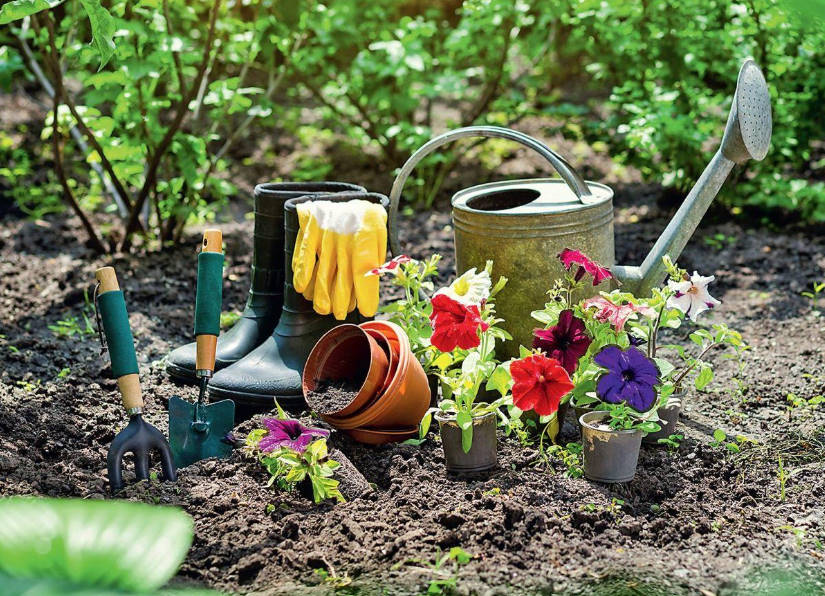
Planted in the spring for early decoration of flower beds seedlings of some cold-resistant annuals quickly gives the effect, but to maintain a lush bloom until the autumn, as a rule, can not.
Planted in the spring for early decoration of flower beds seedlings of some cold-resistant annuals quickly gives the effect, but to maintain a lush bloom until the autumn, as a rule, can not. At the same time, when sowing the same annuals in April — early may, when the summer season opens, flowering will come later, but the garden will be filled with colors at the end of the season.
Well tolerate transplant alyssum, calendula, pyrethrum, Astra, viola, Antirrhinum. They can be grown on a separate bed and later transplanted into a flower bed. Other plants are better either immediately sow in a permanent place, or grow seedlings in pots.
Such crops as Dianthus, Gazania, Osteospermum, Pelargonium and Nicotiana suaveolens are more practical to acquire ready-made seedlings. In the spring, seedlings are planted on a permanent place more rarely, given the rapid growth. In autumn, planting density is increased, as the growth and development of plants slow down.
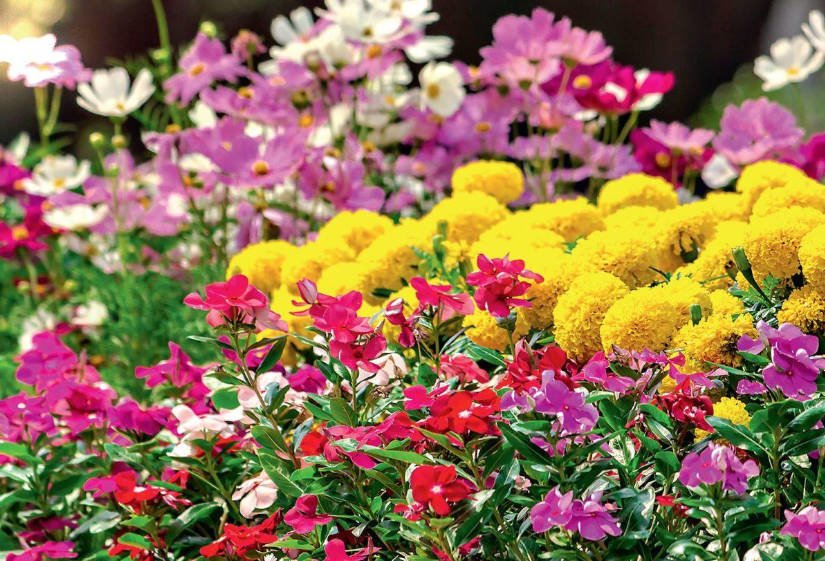
Riot of colors.
Compact, dwarf varieties, designed mainly for growing in containers, are fading faster. Their shoots, reaching a certain length, stop development, and therefore buds on them are not formed. Longer bloom varieties of standard sizes. Elegant look plants with a thick Bush of a large number of shoots. This is achieved by one or two pinching the tops of the stems when growing seedlings.
For long flowering is important not to allow plants to tie the seeds, so the withering flowers should be immediately removed. In addition, some annuals after the first wave of flowering shorten “waste” stems to cause the growth of new flowering shoots. The stems are abundantly covered with flowers Impatiens walleriana by mid-summer much stretch and become bare at the bottom. They can be completely cut off immediately above the lower side shoots. Use cuttings for reproduction-they still have time to bloom. To wilt at the first two or three days, dip them into water.
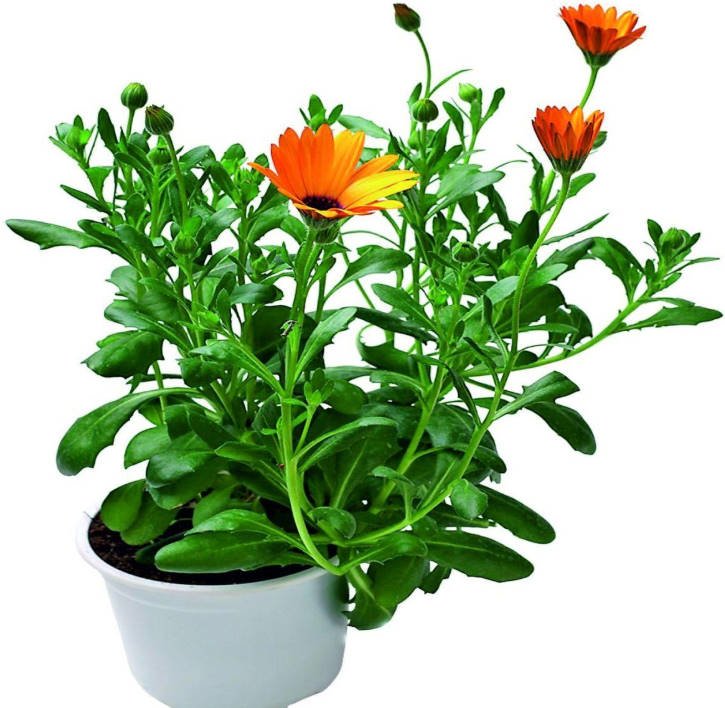
Calendula is beautiful, besides it has medicinal properties.
At the end of the summer, the danger of spreading fungal diseases increases. Therefore, a strongly overgrown annuals of shoots, thickening the middle of the Bush, it is useful to cut completely. Thinning improves not only the air but also the light mode: because the tightness of the stems do not have enough light, they are stretched, weaken, more prone to disease and bloom worse.
Recommendations:
- In case of rainy autumn for annual flowers it is important to provide good drainage. Best protected from problems associated with excess moisture, plants in containers and in elevated flower beds.
- A well-lit and sun-warmed place is the key to successful flowering of plants at the end of the season, when there are fewer Sunny and more cloudy days.
- The shortage of supply annual flowers before growing season is complete. Therefore, for a long and abundant flowering plants fed until August full complex fertilizer every 10-14 days, stimulating growth and formation of new shoots.
We are not afraid of cold!
Do you want to admire the amazing flowers almost before the frost? Then settle in your garden Gazania, Antirrhinum, Osteospermum, Brassica oleracea var. acephala, mealy Salvia and Salvia green, alyssum, viola, Nicotiana suaveolens, etc.
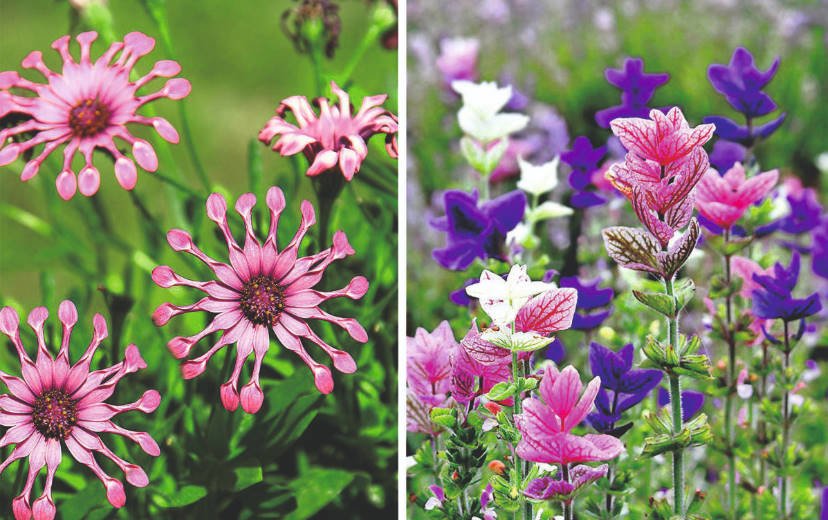
Left: Osteospermum. Right: Salvia.
Decorative cabbage
Decorative cabbage is the Queen of autumn flower beds, despite the complete absence of flowers in her luxurious outfit. The plant pleases the eye with colored leaves of the most diverse and bizarre shape. They can be white, cream, pink, Burgundy, with a wavy and corrugated edge and highly dissected.

Decorative cabbage
Leaf socket resembles a huge double flower, miraculously emerged directly from the ground, or an exotic palm tree on a high stem. The amazing properties of this plant include the rare ability to withstand repeated freezing and easy to transfer transplant in adulthood.
Verbena
Verbena beautiful decorative and flowers and leaves. This is one of the most beautiful Verbena, preserving its effectiveness until the end of the summer. Large lilac inflorescences-umbrellas carelessly scattered among the openwork carved leaves, and strongly branched stems, rooted in the nodes, form on the soil of a beautiful carpet or fall down a picturesque cascade when grown in hanging baskets.
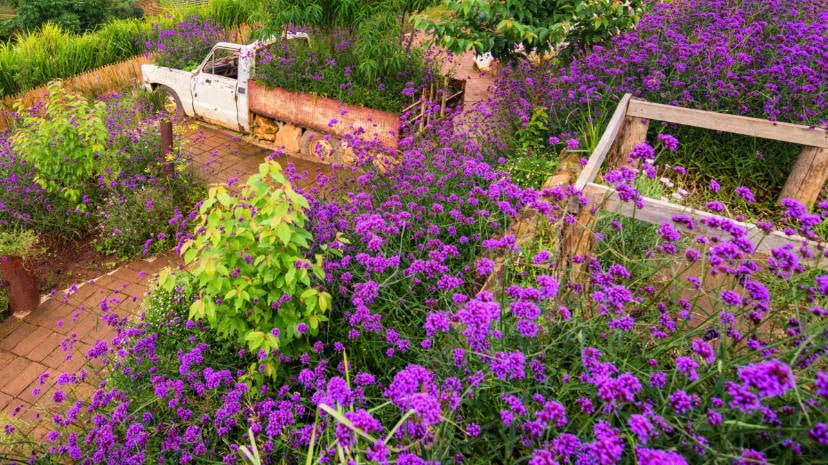
Strongly branched stems of verbena form a beautiful carpet
The most popular variety is ‘Imagination ‘ with purple-violet flowers.
Nicotiana suaveolens
This” relative “Petunia favorably with “sister” resistance to cold autumn weather and blooms until late frosts. The most pleasant aroma of different plants with white and greenish-white flowers, and the smell appears in the evening, and during the day the flowers remain closed.
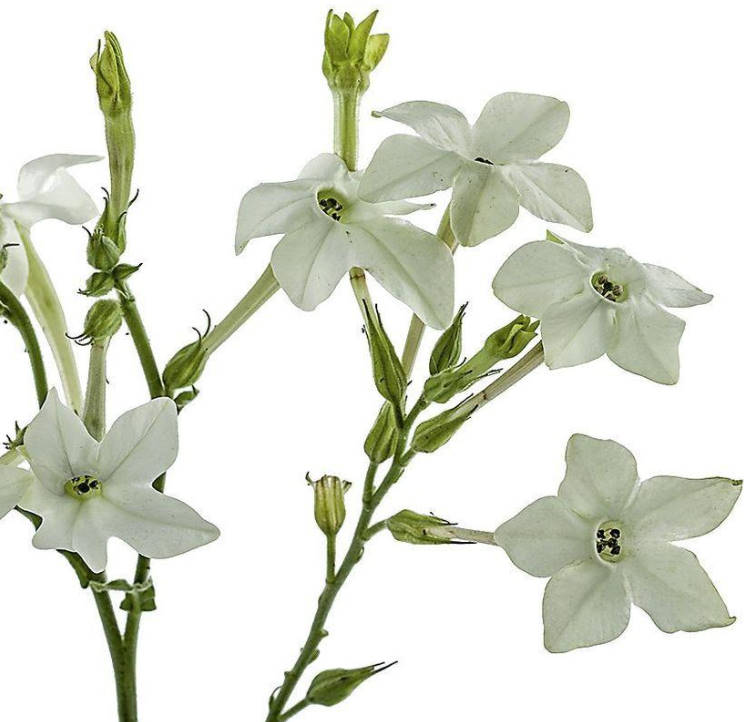
Nicotiana suaveolens
Varieties of tobacco with unclosed flowers of other colors are also derived: pink, wine-red, lilac, lilac, but, as a rule, they are devoid of flavor. Blooms in 70-90 days after sowing.
Osteospermum
Osteospermum is a perennial shrub native to the Cape region of South Africa. White, lilac, purple, yellow and orange inflorescences-baskets resemble daisies.
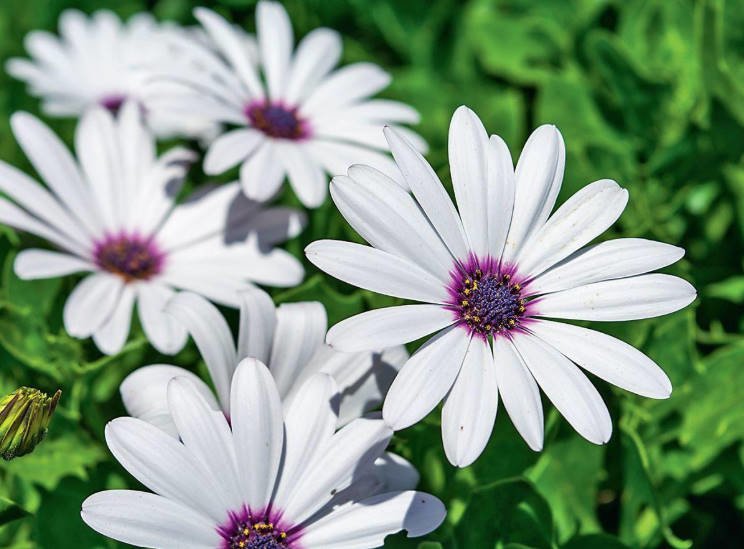
Osteospermum
Compact varieties have a height of 20-60 cm, African “chamomile” bloom profusely until the frost. Originally look inflorescences with almost completely fused into a tube reed flowers in the shape of a spoon. In bad weather, the flowers remain open. Easily propagated by cuttings. Favorite varieties can be stored in the winter in a cool room. Requires loose fertile soil.
